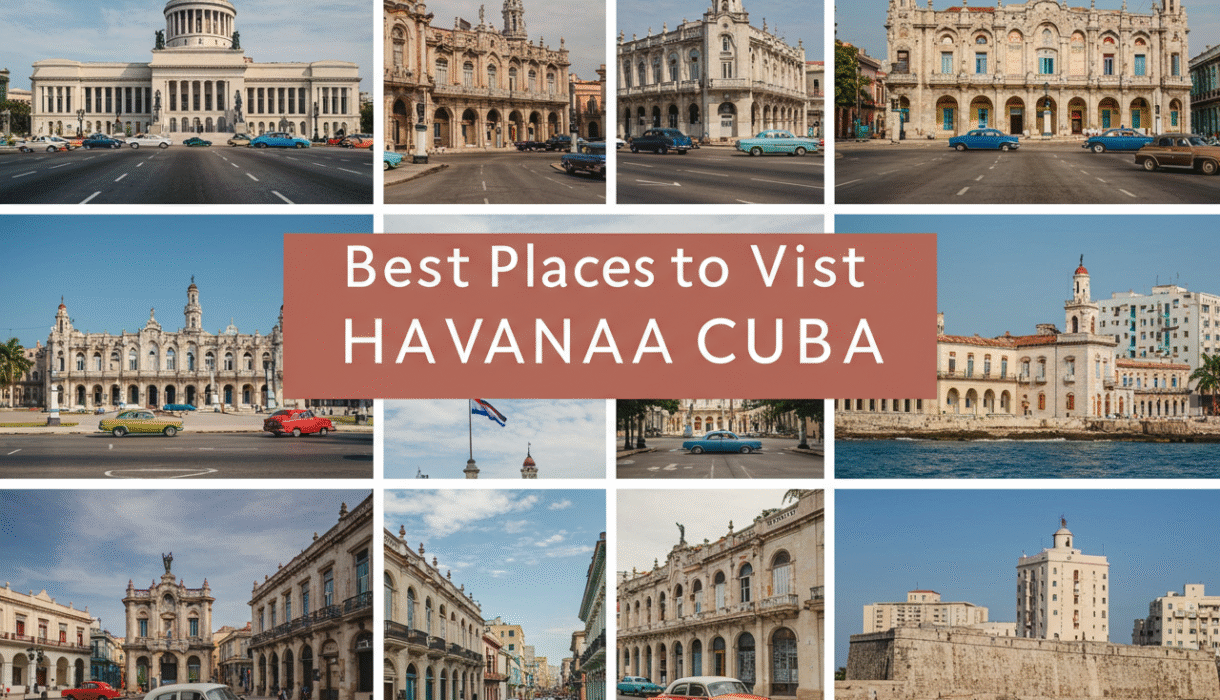
HAVANA -CUBA
Posted in :
Havana, Cuba: Your Comprehensive Guide to Discovering the Charm of the Old City and Caribbean Beaches
Getting to Know Havana
Havana, the capital of Cuba, is a city renowned for its rich history, vibrant culture, and stunning architecture. As one of the oldest cities in the New World, it has been a melting pot of various influences, from Spanish colonialism to African traditions, creating a unique blend that captivates visitors. The historic center, known as Old Havana (Habana Vieja), has been designated a UNESCO World Heritage site, showcasing its well-preserved Baroque and neoclassical buildings alongside colorful, bustling streets.
The city’s vibrant atmosphere is palpable the moment one arrives. From the infectious rhythms of salsa and son music echoing through the plazas to the lively conversations of locals and tourists alike, Havana exudes an unmistakable charm that draws people from all corners of the globe. Every corner holds a piece of history; iconic landmarks such as the Malecón, a picturesque seawall, and Castillo del Morro, a fortress guarding the entrance of Havana Bay, offer a glimpse into the city’s storied past.
In addition to its historical significance, Havana stands out for its evolving cultural scene. The city is a hub for artists, musicians, and performers, with numerous galleries, theaters, and art collectives showcasing contemporary Cuban creativity. The culinary landscape, too, reflects a mix of traditional and modern influences, with a wide range of dining options that range from elegant paladars to street food vendors serving up authentic Cuban dishes. While exploring Havana, visitors will quickly find that the city is not merely a destination but a living, breathing entity rich in tradition and innovation.
As we delve deeper into the sights, flavors, and accommodations that Havana offers, this introduction serves as an invitation to discovery, promising an unforgettable experience in this dynamic, historic capital. Whether seasoned travelers or first-time visitors, Havana’s myriad attractions will undoubtedly leave lasting impressions.
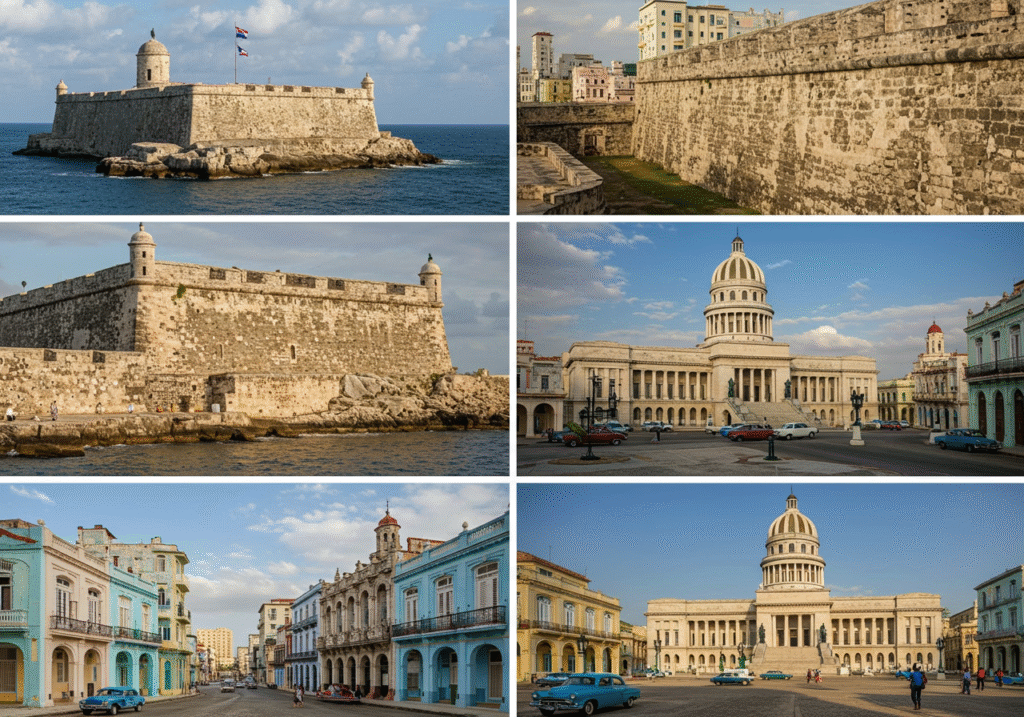
Historical Landmarks
Havana, Cuba, is rich in history, offering a variety of landmarks that depict the architectural and cultural significance of the city. One of the most renowned sites is the Malecón, a broad esplanade that stretches for several kilometers along the coast. The Malecón not only serves as a social hub where locals and visitors gather but also stands as a testament to the city’s resilience. Its origins date back to the early 1900s, and over the years, it has become a symbol of Havana, reflecting the vibrant spirit of its residents through numerous festivals, events, and informal gatherings.
Another essential landmark is the Plaza de la Revolución, which has played a critical role in Cuba’s political history. This expansive square is flanked by notable buildings such as the Ministry of Interior and the iconic José Martí Memorial, which rises to a height of 109 meters. The plaza hosted numerous political rallies and events, showcasing the country’s revolutionary spirit and national pride. Visitors to Plaza de la Revolución can appreciate the prominent Che Guevara mural, which captivates the attention of observers and is emblematic of Cuba’s revolutionary ideals.
Old Havana (Habana Vieja), designated a UNESCO World Heritage site, encapsulates the historical essence of the city. As one of the best-preserved colonial quarters in the Americas, it features a network of cobblestone streets, baroque architecture, and an array of plazas, each narrating stories of its past. Landmarks such as the Cathedral of Havana and the Castillo del Morro reflect various architectural styles, showcasing Havana’s evolution over the centuries. Exploring Old Havana is akin to walking through a living museum, where the legacies of Spanish colonization, Afro-Cuban influences, and revolutionary history converge.
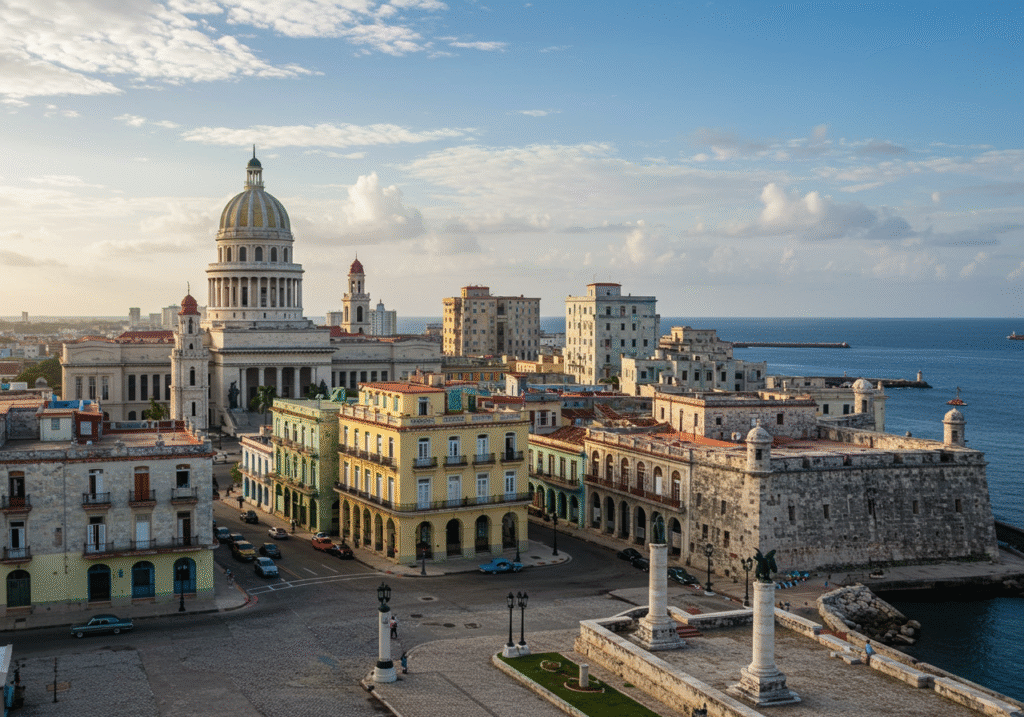
Cultural Attractions
Havana boasts a rich tapestry of cultural experiences that captivate visitors from around the globe. Among the city’s cultural landmarks, the Museo de la Ciudad stands out as a must-visit destination. Housed in a beautifully restored colonial building, this museum provides insights into Havana’s expansive history and heritage through its diverse collection of artifacts and exhibitions. Visitors can appreciate everything from colonial-era relics to contemporary exhibits that illustrate the evolution of Cuban society.
In addition to historical museums, Havana is home to a dynamic contemporary art scene. Local galleries and artist studios showcase works that reflect the island’s cultural narrative, often challenging social and political norms. Venues like the Fabrica de Arte Cubano—a former cooking oil factory transformed into a multi-disciplinary art space—offer an eclectic mix of visual art, music, and performances. This creative hub promotes both established and emerging artists, making it a vibrant center for artistic exploration in Havana.
The performing arts are also a significant part of Havana’s cultural identity. The famed Tropicana Cabaret provides a unique glimpse into the island’s rich musical heritage. With its breathtaking live performances highlighting the rhythms of salsa, mambo, and bolero, visitors are treated to an unforgettable night of entertainment. The cabaret’s outdoor setting, coupled with its dazzling costumes and talented performers, creates a spectacle that celebrates Cuba’s lively spirit.
Overall, the cultural attractions of Havana present an array of experiences that reflect the city’s artistic richness and historical significance. Whether engaging with the past at museums, exploring contemporary art, or enjoying electrifying theater performances, visitors are sure to find their time in Havana both enlightening and enriching.
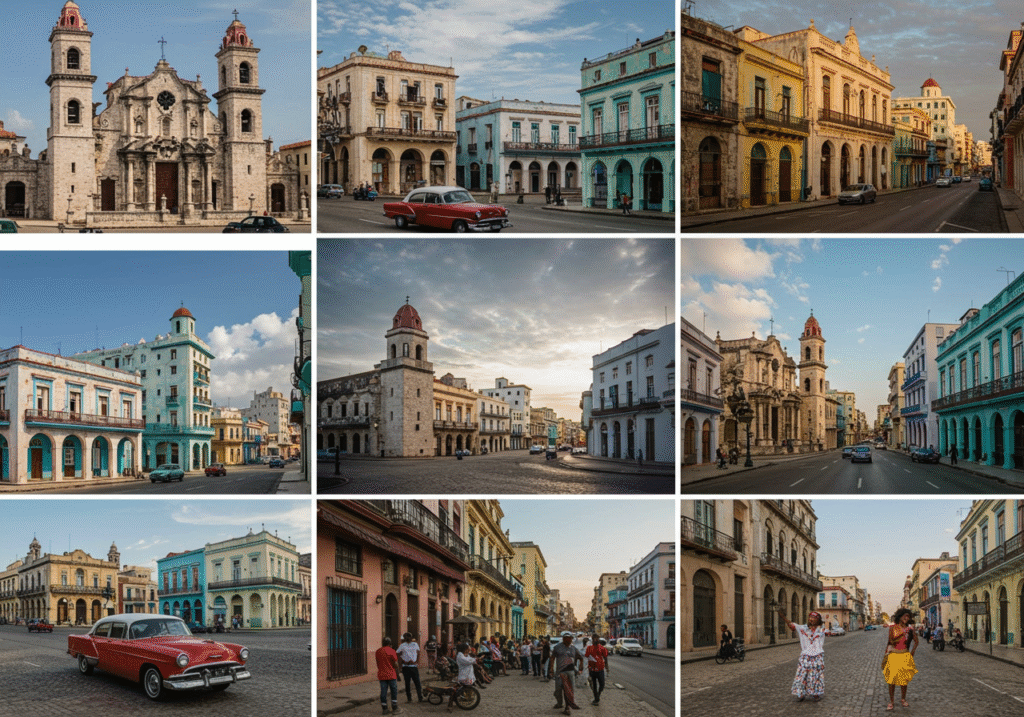
Top Attractions Worth Exploring
Havana, Cuba’s lively capital, is a city of diverse neighborhoods, each offering its own character and charm. Among them is Vedado, a district celebrated for its mid-20th-century architecture and energetic vibe. The famous Malecón, a coastal walkway ideal for relaxing strolls and mingling with locals, runs along its edge. In Vedado, visitors will also find cultural landmarks like the legendary Hotel Nacional and the Cuba Libre Theater, both of which offer a window into the island’s vibrant artistic life. Nearby, Centro Habana gives travelers a more grounded view of daily life in Cuba. This neighborhood buzzes with activity and is filled with a colorful mix of colonial-era buildings, street art, and local vendors. It’s the kind of place where music drifts through the streets and community life unfolds before your eyes. Centro Habana is also conveniently located near key sights such as El Capitolio and the Gran Teatro de La Habana, making it an ideal base for exploring the city’s cultural scene. Then there’s Old Havana—La Habana Vieja—the heart of the city’s colonial heritage and a designated UNESCO World Heritage Site. Popular thoroughfares like Obispo Street brim with local shops, cafes, and important landmarks such as Castillo del Morro and Plaza de Armas, where artisans display handcrafted goods. It’s a perfect spot for history lovers and those wanting to savor traditional Cuban dishes in an authentic setting. Together, Vedado, Centro Habana, and Old Havana reveal the layers of Havana’s personality—past and present, calm and lively, elegant and rustic. Each neighborhood adds depth to the experience of the city, making it essential for visitors to explore them all to fully appreciate what Havana has to offer.
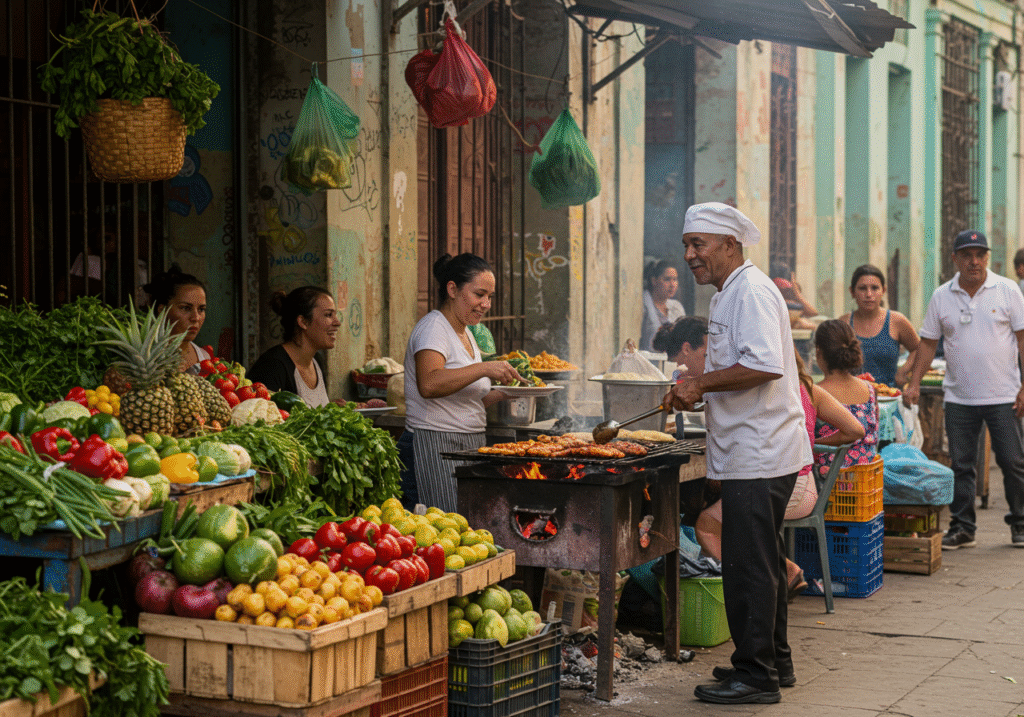
Discovering the Rich Flavors of Local Food
Havana’s culinary scene is a vibrant tapestry woven from its rich history and diverse cultural influences. The city offers an array of local foods that reflect flavors derived from Spanish, African, and Caribbean traditions. One cannot visit Havana without indulging in traditional dishes such as Ropa Vieja, which translates to “old clothes” and typically features shredded beef in a flavorful tomato sauce. This dish epitomizes the heart of Cuban cuisine, showcasing a harmonious blend of seasonings that tantalizes the palate.
Another must-try is Tostones, crispy twice-fried plantains that serve as a popular side or snack. They are often accompanied by a garlic dipping sauce that enhances their flavor. These delightful bites embody the essence of Cuban comfort food and are readily available at many local eateries. As you traverse the streets of Havana, be sure to immerse yourself in the bustling atmosphere filled with vendors offering these tasty plantain treats.
Havana is also home to numerous popular restaurants that showcase the city’s culinary prowess. Establishments like La Guarida and Palacio de los Matrimonios provide not only exquisite meals but also culturally rich environments. These venues often source ingredients locally, which adds freshness to their dishes and supports the community. Additionally, many chefs are embracing a modern twist on traditional recipes, melding flavors to create unique dining experiences. This fusion of tastes is further amplified by the availability of street food, where visitors can savor quick bites like Empanadas or Lechón, marinated pork, served with rice and beans.
The culinary journey through Havana is not just about eating; it is about experiencing the vibrant culture of the city. With each dish, visitors are offered a glimpse into the island’s history and the enduring influence of its diverse heritage. Whether dining in upscale restaurants or enjoying local street food, Havana’s cuisine promises a delightful exploration of flavors that will leave a lasting impression.
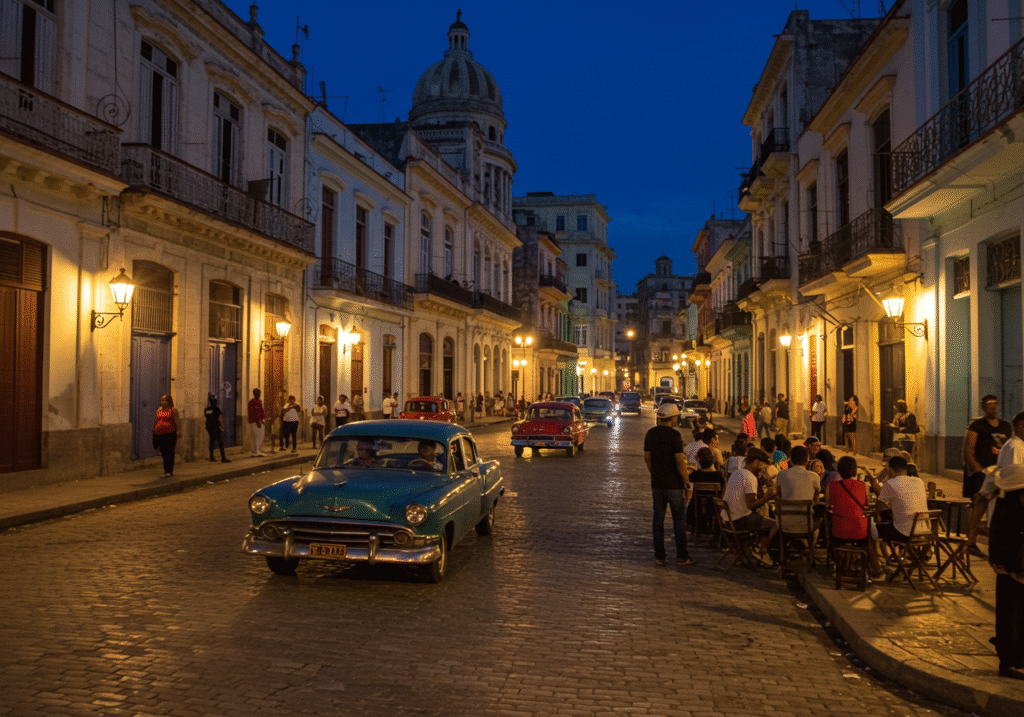
Havana After Dark: Music, Dance, and Local Vibes
Havana comes alive after sunset, offering an exciting blend of music, dance, and community spirit that captivates both residents and tourists. At the heart of its vibrant nightlife are its renowned salsa clubs, where the beat of Cuban rhythms fills the air. Iconic venues such as Casa de la Musica and Tropicana host energetic live shows that combine traditional music with captivating dance performances. These places are not only entertainment hotspots but also cultural landmarks where visitors can join in the dancing and experience the warmth of Cuban social life.
Beyond the dance halls, Havana’s nightlife scene includes a range of bars and live music spots that reflect the city’s relaxed yet spirited character. The famous Malecón esplanade features popular hangouts where guests can enjoy a mojito, feel the ocean breeze, and listen to talented musicians performing everything from son cubano to jazz. A must-visit is La Bodeguita del Medio—immortalized by author Ernest Hemingway—offering a unique mix of history, music, and a lively crowd.
For a deeper cultural experience, tourists are encouraged to attend local music festivals and performances, which showcase the country’s rich artistic heritage. These events often take place in open-air settings or community venues, giving guests a chance to engage with the local scene authentically.
While enjoying the city at night, it’s wise to follow basic safety measures: stay in well-lit areas, keep an eye on personal items, and opt for reliable transportation options. Familiarizing oneself with local etiquette—such as respectful greetings and appreciating the cultural significance of music—adds a thoughtful touch to the evening.
Havana’s nightlife isn’t just about entertainment; it’s a celebration of Cuban life, where each melody and dance step tells a story, leaving visitors with memories that linger long after the night ends.
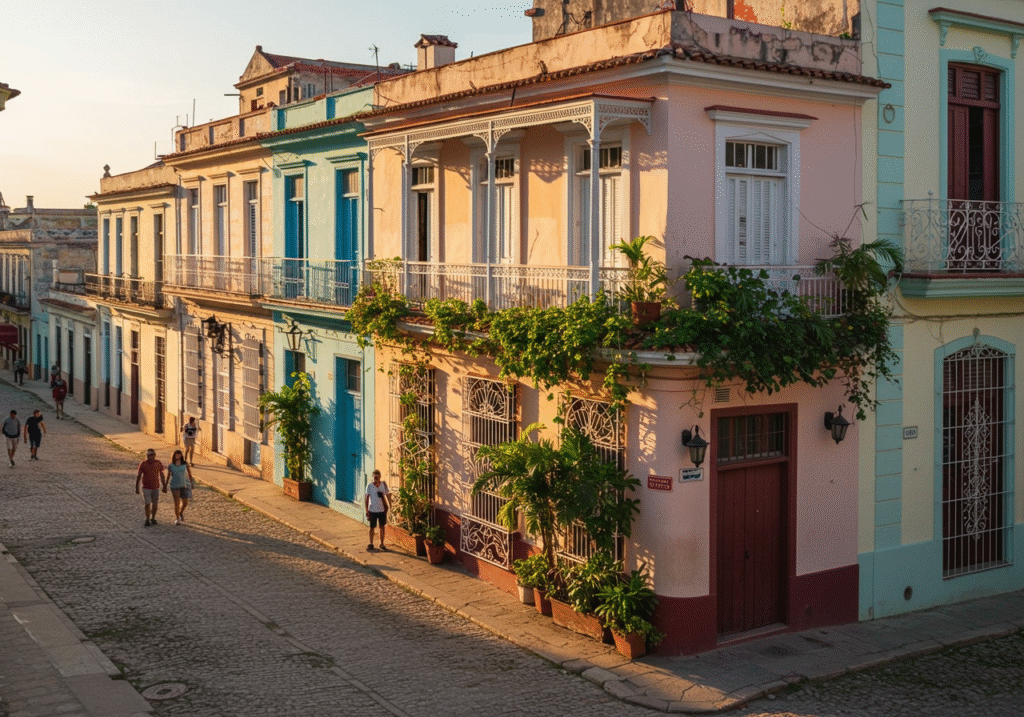
Where to Stay in Havana: Comfort, Culture, and Charm
Havana, Cuba’s lively and culturally rich capital, provides travelers with a variety of places to stay, ranging from elegant historic hotels to cozy, locally-run guesthouses. Whether you’re looking for luxurious comfort or a more authentic experience, the city offers something for every taste and budget.
One of the most renowned places to stay is the historic Hotel Nacional de Cuba. This landmark hotel, with its panoramic views of the Malecón and timeless architecture, has welcomed many famous guests since its opening in the early 20th century. With its classic interiors, scenic gardens, and traditional Cuban charm, the hotel also features a large pool, several restaurants, and a popular bar serving vintage cocktails.
In central Havana, Hotel Parque Central offers a balance of colonial elegance and modern amenities. Located near popular sites like El Capitolio and the old city, it’s perfect for travelers who want to explore the heart of Havana. A highlight of the hotel is its rooftop pool and lounge area, where guests can enjoy sweeping views of the city skyline.
For those looking for a more personal and cultural experience, casas particulares—Cuba’s version of guesthouses—are a great option. These family-run homes offer a welcoming environment where visitors can connect with locals and enjoy home-cooked Cuban meals, often including breakfast. Many tourists appreciate the hospitality, affordability, and genuine insight into Cuban daily life these accommodations provide.
In short, whether you opt for the elegance of a historic hotel or the warmth of a local guesthouse, Havana has no shortage of inviting and affordable places to stay that complement the city’s vibrant spirit.
Essential Advice for a Smooth and Practical Travel Experience
Visiting Havana, Cuba, requires careful planning to ensure a smooth and enjoyable experience. One of the foremost considerations for any traveler is the visa requirement. Most tourists will need to apply for a tourist card, which is typically valid for 30 days and can often be acquired through Cuban consulates or airlines. It is crucial to check the regulations relevant to your home country prior to travel to avoid any unnecessary delays.
On the financial side, Cuba operates with two currencies: the Cuban Peso (CUP) and the Cuban Convertible Peso (CUC). Although the CUC has been phased out as of June 2021, make sure you familiarize yourself with local currency dynamics. Currency exchange can be done at banks, hotels, or authorized exchange houses, but avoid street-side exchanges to prevent potential scams. Carrying cash is advisable, as many establishments do not accept credit cards, especially those issued by U.S. banks.
Transportation within Havana is quite diverse. Taxis are readily available, but ensure to agree on a fare before getting in. Alternatively, consider using the local Habana Rutas or bike taxis, which are not only cost-effective but provide a unique way to see the city. Public buses are also available and offer a glimpse into local life; however, they may be less reliable and crowded.
The best times to explore Havana are from November to April when the weather is more temperate and rainfall is minimal. However, consider off-peak periods if you wish to avoid crowds and experience more local interactions.
Lastly, understanding basic Spanish phrases can be incredibly beneficial due to the limited English proficiency among locals. Maintaining respect for local customs and traditions will enrich your travel experience, making it not just enjoyable but also meaningful. Pay attention to your health considerations, such as being mindful of food and water safety, which will ensure a pleasant stay in this vibrant city.
Conclusion: Why Havana Should Be on Your Travel List
Havana, the capital of Cuba, is a city full of life, where history, culture, and everyday vibrance come together in a truly captivating way. What sets it apart is its seamless blend of colonial charm and modern influences, creating a colorful and immersive atmosphere that captures the imagination of every visitor.
One of the main reasons to visit Havana is its deep historical legacy. The city is home to iconic sites such as the Malecón, the historic quarter of Old Havana, and the grand Capitol building. As you wander through its streets and plazas, you’re met with architectural beauty that reflects Cuba’s complex and fascinating journey through time.
On the cultural front, Havana shines as a hub of music, art, and dance. The sounds of salsa and traditional Cuban rhythms fill the air, creating an inviting setting where locals and visitors alike are encouraged to join in the celebration. From vibrant neighborhoods like Vedado to the spectacular shows at the Tropicana cabaret, there are endless opportunities to engage with the city’s rich cultural pulse. Local cuisine adds even more flavor to the experience, offering delicious dishes that reflect Cuba’s culinary roots.
What truly enhances the Havana experience, however, is the warmth and hospitality of its people. Travelers are often welcomed with open arms, making it easy to connect with locals and gain a deeper appreciation for Cuban life. Ultimately, visiting Havana is much more than a vacation—it’s an invitation to step into a world filled with color, passion, and history that leaves a lasting impression.

